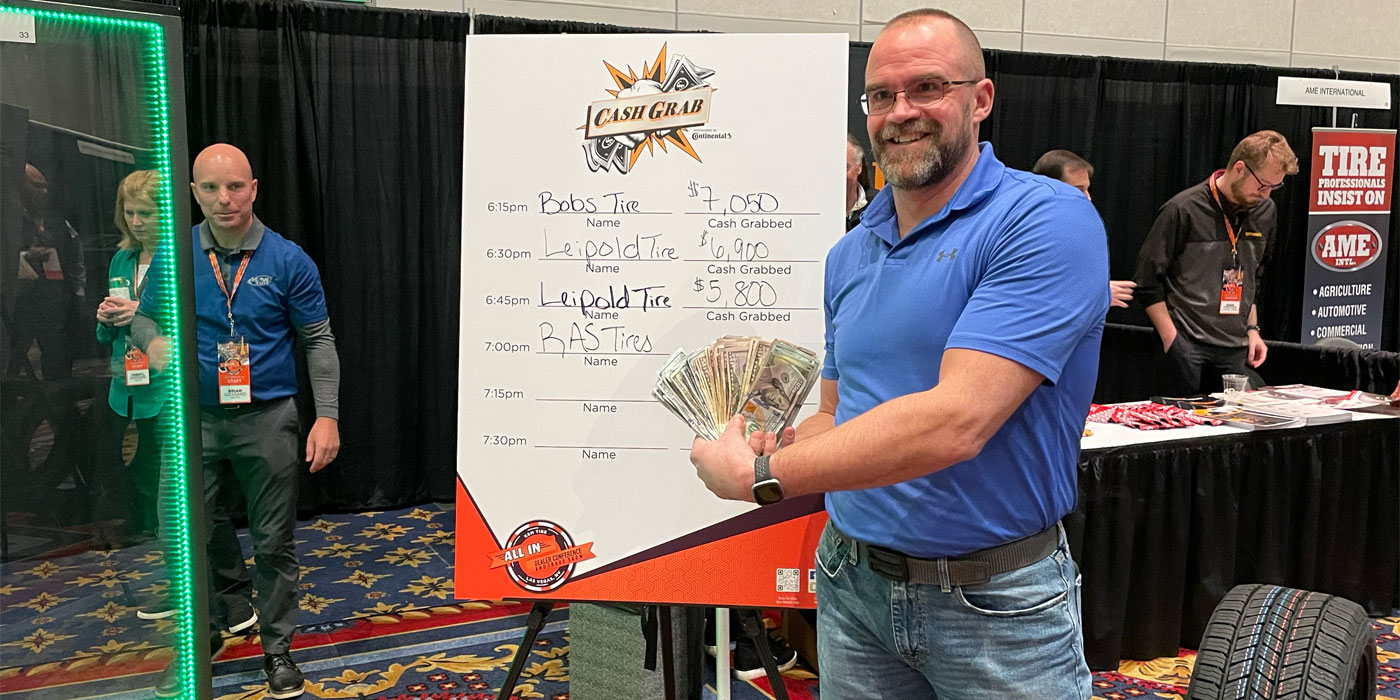A Sharp Examination Can Keep Profits Flowing in Hard Times
For the last couple of years, many independent tire dealers have been experiencing something new: financial hardship. After 11 consecutive years of growth, the economy started sputtering in 2000 and continued falling, leaving many small businesses – like tire dealers ®“ in a survival, rather than growth, mode.
Because they’re undercapitalized and sometimes undisciplined financially, some tire dealers don’t know how to adjust their operations to make the best of tough times.
But if you’re one of these challenged dealers, you can improve your fiscal performance by using financial management techniques involving working capital, inventory, accounts receivable and accounts payable. In many cases, these techniques are relatively simple steps. One of the most crucial among them, though, is expense management.
To set logical growth and profit goals, you really need to understand where your business is today. Start by examining your breakeven point, the absolute minimum amount of sales you need so that gross profit covers expenses. Any plus-side dollars left after that is your net profit.
You want to keep your breakeven point as low as possible, especially during slow times. First, of course, you must know what your breakeven point is. Do you know what your annual sales need to be so that your gross profit covers your total expenses? Do you have a good guess?
There are more complex and exacting ways to determine your breakeven point, but here are two easy ways to get a fairly precise look at yours:
Breakeven – By Units
Calculate your total annual expenses in dollars. Divide that number by your average gross profit per unit. The result is the number of units you must sell each year to breakeven.
For example, if your annual expenses are $150,000, and your average gross profit per unit is $30, then your breakeven is:
$150,000/$30 = 5,000 units per year.
Breakeven – By Dollars
Take your annual expenses in dollars. Divide that number by your average gross profit percentage. The average gross profit must include the gross profit of all sales – tires, service, etc. The result is your breakeven point in dollars, or the amount of revenue you need to produce that year to breakeven.
So if your annual expenses are $150,000 and your average gross profit percentage is 30%, then your breakeven is:
$150,000/0.30 = $500,000
If you look at these simple formulas, you’ll realize that there are only two ways to reduce your breakeven point and, thereby, increase profits: reduce expenses or increase your gross profit on every sale.
Beware Expense Creep
It’s an unfortunate fact of business that unwatched expenses rise like water in a tub with the tap left on. The first step toward controlling expenses is grouping them. A good place to start is by relating expenses to specific functions.
For instance, you could assign your expenses to "tire sales," "service sales," "occupancy" (rent/mortgage, leases), and "general and administrative" (also known as G&A).
Then identify which of those expenses are "controllable," those which can be influenced by the owner (salaries, benefits or utilities); "non-controllable" (leases, insurance or taxes); and those that are "discretionary," those costs that you may choose to incur (dues, subscriptions or snacks/coffee).
Finally, examine your expenses in each category over the past three or four years. By going back that far you’re likely to capture expense data from good years and bad years, and some unusual one-time expenses won’t have too much impact.
More importantly, you’ll begin to see trends emerge. If almost all of your expenses are rising, which ones are rising the fastest? Is there some unexpected seasonality to some expenses? Were there some hidden costs attached to the acquisition of some new equipment?
Other Comparison Points
An eye-opening way of looking at your expenses is to compare them with sales. Let’s say your people expenses (wages, benefits, payroll taxes, uniform costs) rose 30% over the past four years. Should you be worried? It depends. If your sales rose 45% over the same period, then people expenses took less and less of your sales dollar. But if your sales were flat, your profits almost certainly shrunk, if they haven’t disappeared altogether. So, by comparing your expenses over each of the past few years and against your sales from the same periods, some key insights may be revealed to you.
Another useful comparison is to look at your expenses against industry standards. The industry average for people costs, for example, is about 21% of sales, or 57% of gross profit.
That’s the average. But average isn’t necessarily where you want to be. In most cases, your people costs really should be less than half of your gross profit.
If your people expenses look to be too high, you might look at a simple figure: sales per employee.
Divide your most recent annual net sales by the number of full-time employees you currently have. Is that number higher or lower than it was two or three years ago?
This comparison is also a useful tool as you consider hiring decisions going forward. If your annual sales per employee is $100,000, you’ll need to generate another $100,000 in sales to afford a new hire. Have your annual sales grown by $100,000 since your last staff increase? Or are you convinced that business will increase sharply over the next few months? If not, you might consider delaying that hire.
There are many financial tools available to help you better manage your business, and these are especially helpful during slow periods.
But if profits are disappearing, expense management is an excellent way to start bringing your business back into the black. TR
Do You Know How Calculate Margin?
There is a big difference between mark-up and margin. Mark-up is something you do, margin is something you make.
If you, for instance, wanted to make a 30% gross profit on the sale of a P235/75R15 that cost you $45, how would you make that calculation?
A) $45 x 130%
B) $45/70%
Answer A creates a selling price of $58.50, and yields a gross profit of $13.50 per tire.
Answer B, however, makes the selling price of each tire $64.29, putting $19.29 in your pocket from each tire sold.
If you said Answer B, by the way, you got it right.
Answer A is the method most people use to mark-up a price. Take the Cost ($45) + Margin (30%) and you get the Selling Price ($58.50). But if you worked the problem backwards, you’d find the effective margin was only 23%, not 30%. Gross Profit ($13.50) divided by the Selling Price ($58.50) equals 23%.
In Answer B, you use a simple equation: Cost + Profit = Selling Price. Selling Price has to equal 100%; it is, after all, the sum total of Cost and Profit. If your target Profit is 30%, then Cost must make up the remaining 70%, right? So, you take the Cost ($45) and divide that by the percentage of the Selling Price that represents (70%), or $45/70% = $64.29.
Working the problem backwards, $64.29 x 30% = $19.29, yields your true gross profit.
Jack Phillips is vice president of credit and financial services for American Tire Distributors, based in Charlotte, N.C.













